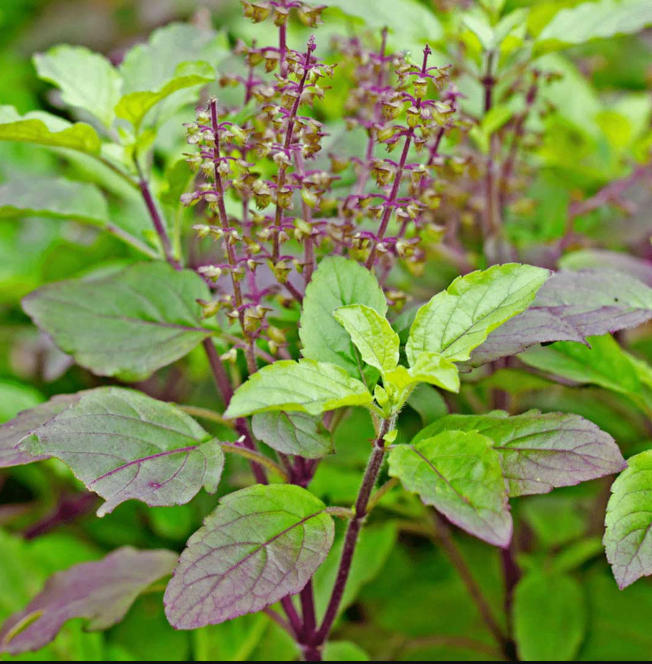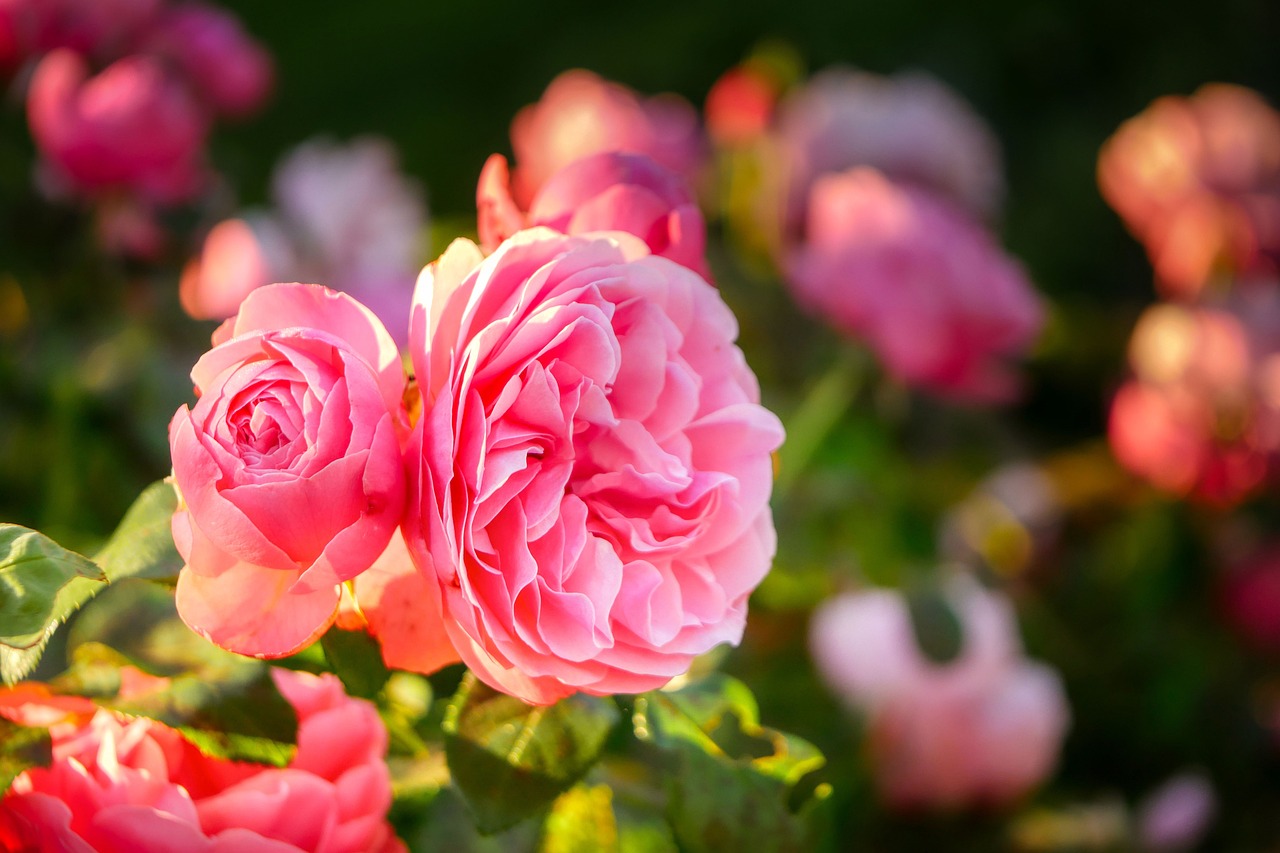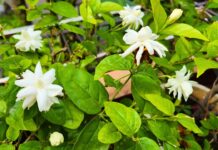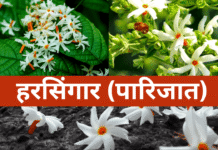Onion Peel Fertilizer: Onions offer many health benefits to us, but did you know that onion peels also serve as a natural, organic fertilizer for plants?
If you are a beginner in gardening or an experienced gardener, consider using onion peels on your plants instead of discarding them.
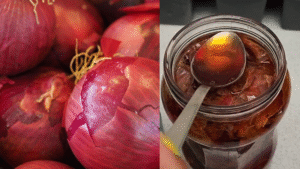
Yes, that’s right! Onion peels are highly beneficial for plants, and you can easily prepare a simple, natural, and effective fertilizer at home.
The best part? Onion peel fertilizer is 100% organic, odor-free, and safe for indoor, outdoor, and even vegetable plants.
What is Onion Peel Fertilizer?
Onion peel fertilizer is a natural and organic homemade fertilizer made from onion peels. This fertilizer is made using the nutrient-rich properties found in onion peels.
Why to use Onion Peel Organic Fertilizer?
Now, you are thinking, why use onion peel as a fertilizer on plants? So, here are some reasons to use this fertilizer on plants:
- onion peels are easily available at home,
- it contains additional micronutrients which are beneficial for our plants,
- it reduces kitchen waste,
- it is safe and environment friendly.
Benefits of Onion Peel Fertilizer
This process extracts beneficial compounds from the peels to create a liquid solution or tonic that:
- it improves plant growth and health,
- it keep leaves shiny & healthy,
- it encourages flowering, fruiting and seed formation,
- also supports enzyme activation and energy transfer within the plant.
How to make Onion Peel Fertilizer at Home
1. Collect onion peels:
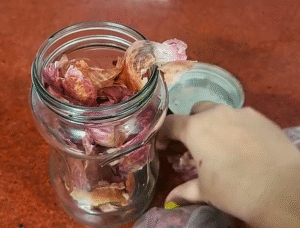
- First step is to take only dry onion peels,
- avoid wet pulp to prevent odor and fungus,
- dry peels best for storage, safe to use and do not attract fungus to the soil.
2. Soak the peels:
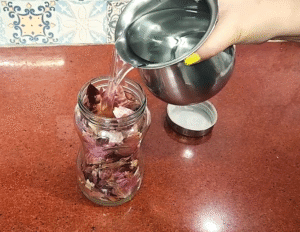
- Second step is to put the peels into jug or glass container,
- add water and cover the container,
- place it in a cool area for 24 hours (not in direct sunlight).
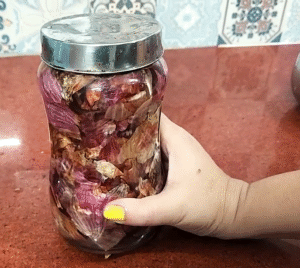
Note:
- After 24 hours, the water turns into a light purple tonic. This tonic is good for seedlings.
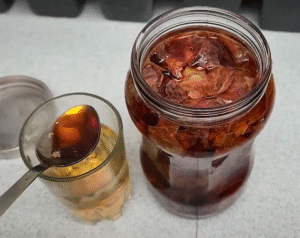
- Mix 2-3 spoons of this tonic with water and give to seedlings and young plants.
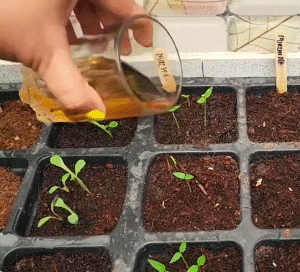
3. Onion Peel Tonic for leafy plants:
- Keep soaking and stir daily for 4 days,
- after 4 days it turns into a strong dark purple tonic and ready to use for leafy plants,
- before giving it to the plants: strain it and dilute with 3 parts water.
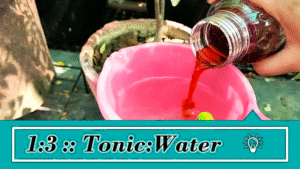
4. Onion Peel Tonic for Flowering & Fruiting Plants
- Soak peels in water for 7 days,
- it will turns in dark brown tonic,
- strain it well and dilute with 3 parts water,
- Use this tonic for fruiting and flowering plants like roses, hibiscus, tomato, brinjal, aparajita, and many other plants.
Note:
Do not store more than 7 days, as it may start rotting.
Liquid fertilizer works wonders for your plants. Want to know the best organic liquid fertilizer for plants? Check here for a complete guide: Top Organic Liquid Fertilizer for plants
Precautions before using Onion Peel Liquid Fertilizer
1. Strain properly: Make sure no onion pulp gets into the soil.
2. Hoe the soil: Loosen the soil, before applying the onion peel tonic.
3. Do not give in wet Soil: Ensure that the soil is dry before applying any liquid fertilizer, as excessively wet soil may hinder absorption.
4. Avoid giving during extreme temperature: Give the tonic in the early morning or evening.
- Avoid giving it during sun exposure or in the afternoon.
When to Use Onion Peel Fertilizer
- You can use the onion peel tonic in all seasons—summer, winter, or monsoon,
- but avoid giving it during the plant’s dormant period.
Examples:
- Do not give to hibiscus, tulsi, curry leaves in winter season (experience dormancy in winter),
- Do not give to roses, chrysanthemums in peak summer period.
- Besides specific dormancy periods, it is safe to give to plants year-round, whether indoors or outdoors plants.
How to use Onion Peel Liquid Fertilizer
- Outdoor Plants: Give once in a month,
- Flowering or fruiting plants: use it twice a month in their peak stages (e.g., roses in winter or hibiscus in summer),
- Indoor Plants: Feed once every 2 months,
- Spraying Option: Dilute the tonic 1:4 with water and spray on plants every 15 days.
How to store the Onion Peel Liquid Fertilizer

1. Keep any leftover tonic in a sealed container and keep it in a cool place.
2. Shelf Life: In hot conditions, it might last 3-4 days; in colder weather, it can last 10-15 days.
3. Check Regularly: Every 2-3 days, open the container and give it a shake.
4. Always shake before use:
5. If it smells bad, don’t use it and if it is odorless, it’s safe for your plants.
Cow dung liquid tonic makes your plants healthy and flourish. Learn the step-by-step guide to make cow dung manure at home.
FAQs About Onion Peel Fertilizer
Q1. Is onion peel fertilizer safe for our plants?
Yes, onion peel fertilizer is an organic fertilizer that is completely safe to use for our plants.
Q2. Can I make onion peel fertilizer at home?
Yes, onion peel fertilizer can be made easily at home. Follow the method given above in the article.
Q3. Is onion peel fertilizer suitable for all plants?
Yes, it is safe for indoor, outdoor, flowering, fruit and foliage plants. Just don’t use it during dormancy.
Q4. How often should I give onion peel fertilizer to plants?
Follow the frequency – once a month for outdoor plants, once in two months for indoor plants, and twice a month for flowering/fruiting plants during peak season.
Q5. Does onion peel fertilizer smell bad?
No, if made with dry peels and used fresh, it stays odor-free.
———————–
Well! adding onion peel liquid fertilizer to your gardening routine can bring remarkable improvements. Explore its positive effects and admire the positive changes in your plants.
Happy Gardening!



